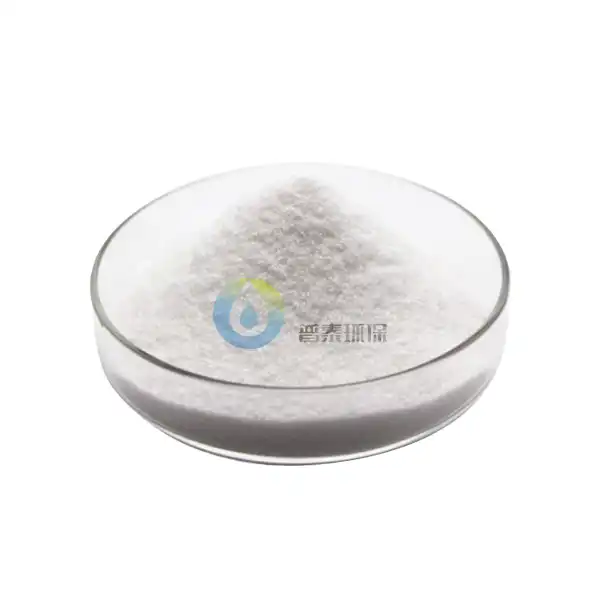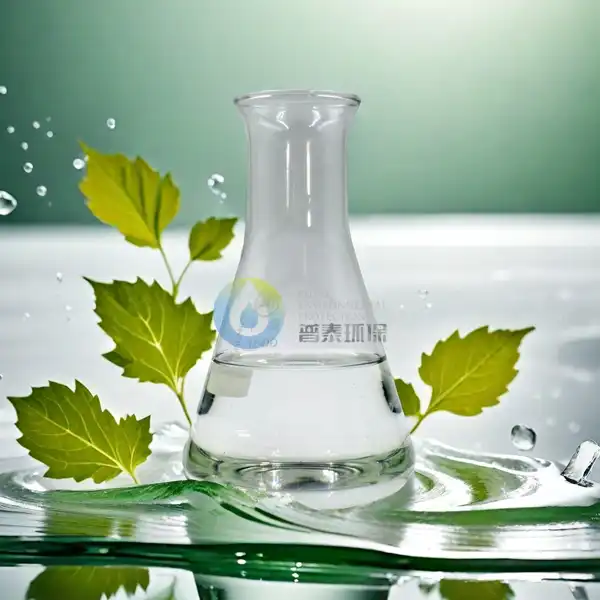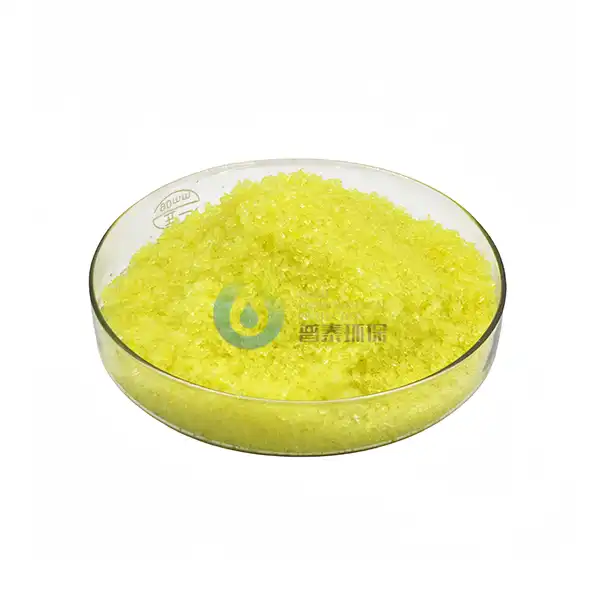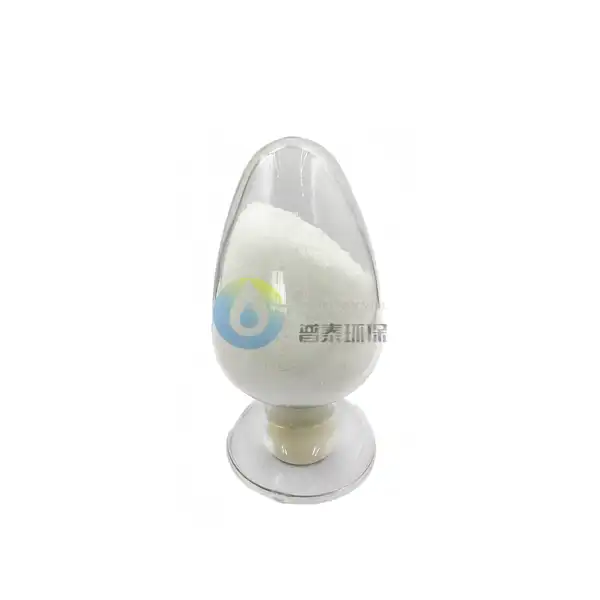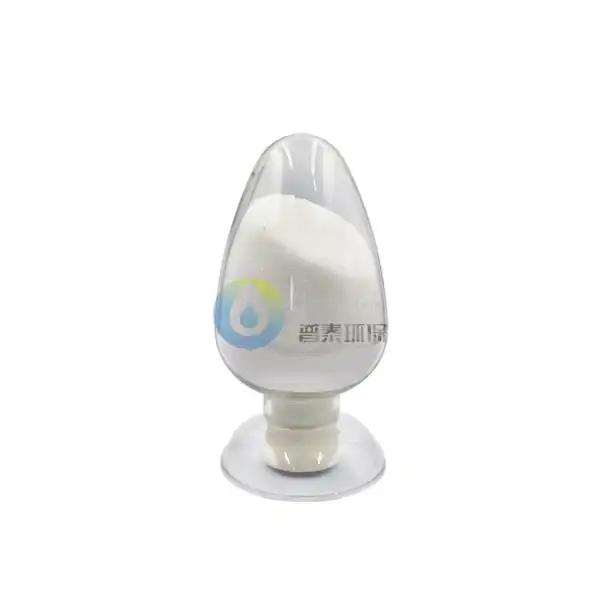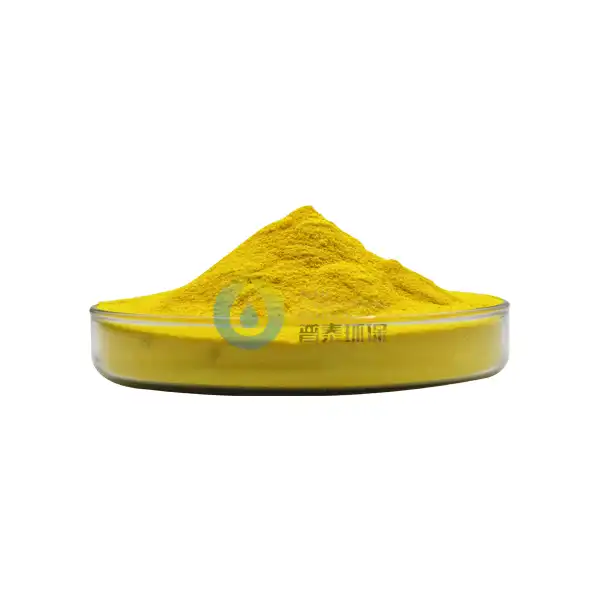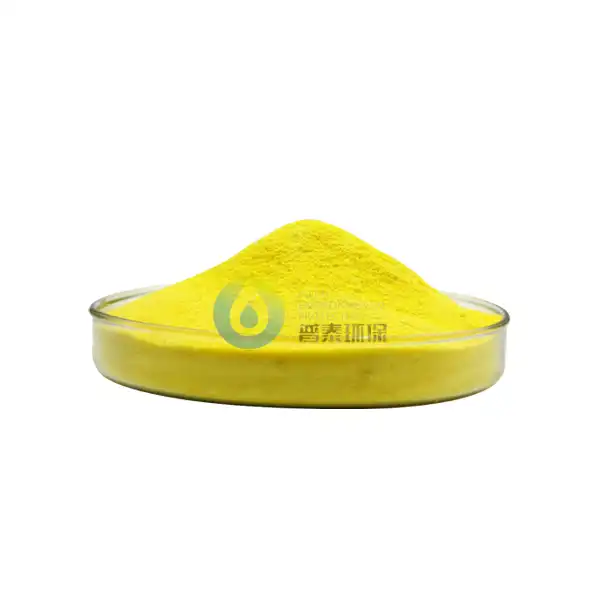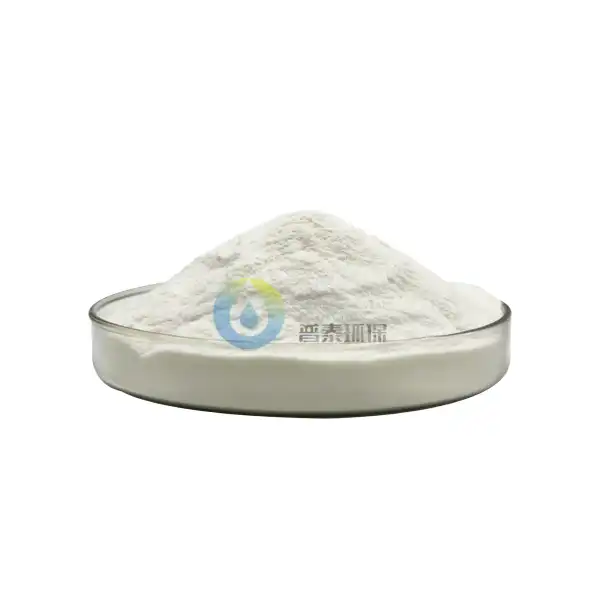What are Poly Aluminium Chloride Liquids' Key Characteristics?
Poly Aluminium Chloride (PAC) Liquid is a high-performance water treatment chemical recognized for its exceptional coagulation and flocculation properties. This inorganic polymer coagulant has gained popularity in municipal water treatment plants, industrial wastewater facilities, and other applications due to its efficiency and versatility. PAC Liquid distinguishes itself from traditional coagulants through its unique molecular structure, consisting of polymeric hydroxyl aluminum complexes with varying degrees of polymerization. This blog explores the key characteristics of Poly Aluminium Chloride Liquid, examining its composition, properties, applications, and benefits in modern water purification processes.
How does Poly Aluminium Chloride Liquid function in water treatment systems?
The Coagulation Process: Understanding PAC Liquid's Primary Mechanism
Poly Aluminium Chloride Liquid works through a coagulation mechanism that neutralizes negative charges on suspended particles in water. When introduced into treatment systems, the positively charged aluminum species in PAC Liquid interact with negatively charged colloidal particles, destabilizing them and promoting aggregation. The pre-hydrolyzed nature of Poly Aluminium Chloride Liquid gives it an advantage over traditional coagulants like aluminum sulfate. The hydrolyzed aluminum species in PAC Liquid can immediately participate in charge neutralization reactions without requiring additional hydrolysis time, resulting in faster coagulation and effectiveness across a broader pH range (typically 5.0-9.0). The polymeric structure creates multi-dimensional bridging between particles, forming stronger, more compact flocs that settle rapidly. This efficiency significantly reduces the required dosage compared to conventional coagulants, making PAC Liquid a more economical and environmentally friendly option.
Flocculation Enhancement: How PAC Liquid Creates Stronger Flocs
Poly Aluminium Chloride Liquid employs multiple mechanisms simultaneously to create stronger, more stable flocs. The polymer chains extend across destabilized particles, creating robust bridges that resist shear forces encountered in treatment processes. This bridging effect is reinforced by the high basicity of many PAC Liquid formulations, which contributes to hydroxide precipitates that capture suspended solids. The result is large, dense flocs that settle rapidly, improving sedimentation efficiency and reducing the load on filtration systems. Poly Aluminium Chloride Liquid maintains its flocculation efficacy even under challenging conditions, such as low temperatures or when treating low-turbidity waters that traditionally respond poorly to conventional coagulants. This reliability translates to more stable treatment processes, lower chemical consumption, and more predictable operational costs.
pH Stability: Working Across Wider Treatment Conditions
Poly Aluminium Chloride Liquid maintains effectiveness across a broad pH spectrum, generally from 5.0 to 9.0, making it versatile in various water treatment scenarios without requiring extensive pH adjustment chemicals. The pre-hydrolyzed structure is the primary reason for this enhanced stability. In conventional coagulants, hydrolysis of aluminum ions consumes alkalinity and can dramatically lower water pH, necessitating additional chemical adjustments. With PAC Liquid, the aluminum species have already undergone partial hydrolysis during manufacturing, resulting in lower alkalinity consumption. This characteristic is particularly beneficial when treating waters with naturally low alkalinity. Treatment plant operators appreciate how Poly Aluminium Chloride Liquid reduces the need for supplementary pH adjustment chemicals like lime or soda ash, simplifying process control while reducing overall chemical costs.
What makes Poly Aluminium Chloride Liquid more effective than traditional coagulants?
Superior Removal of Turbidity and Color in Different Water Conditions
Poly Aluminium Chloride Liquid demonstrates remarkable superiority over traditional coagulants in removing turbidity and color across diverse conditions. In high-turbidity waters, PAC Liquid rapidly destabilizes suspended particles while creating strong flocs that enmesh smaller particles. This dual-action mechanism ensures more comprehensive removal of turbidity-causing materials. PAC Liquid is also highly effective at addressing color removal, particularly in waters containing natural organic matter, humic substances, or industrial dyes. The high-charge density aluminum species readily form complexes with these dissolved organic compounds, effectively removing them through precipitation and filtration. Treatment facilities using PAC Liquid consistently report color reduction rates exceeding 90% where traditional coagulants might achieve only 60-70% removal at equivalent dosages. Furthermore, Poly Aluminium Chloride Liquid maintains its effectiveness across seasonal temperature variations, including cold-water conditions where conventional coagulants often experience reduced efficiency.
Lower Dosage Requirements and Reduced Sludge Production
Water treatment facilities implementing PAC Liquid typically report dosage reductions of 30-50% compared to conventional coagulants while achieving equivalent or superior results. This efficiency stems from PAC Liquid's pre-polymerized structure, which provides higher charge neutralization capacity per unit of aluminum. The reduced chemical input results in significantly less sludge production—often 25-40% less by volume. This reduction creates substantial operational benefits, including decreased sludge handling requirements, lower dewatering chemical consumption, reduced transportation costs, and diminished disposal expenses. Additionally, the sludge produced by Poly Aluminium Chloride Liquid typically exhibits superior dewatering properties, achieving higher solids content with less conditioning chemical requirements. This enhanced dewaterability further reduces the waste volume requiring disposal while lowering the energy consumption associated with mechanical dewatering processes.
Enhanced Performance in Cold Water and Low-Turbidity Conditions
Unlike aluminum sulfate and ferric chloride, whose reaction kinetics slow considerably as water temperatures decrease, PAC Liquid maintains efficient coagulation capabilities even in near-freezing conditions. This temperature resilience stems from its pre-hydrolyzed nature, which eliminates the need for temperature-dependent hydrolysis reactions that conventional coagulants must undergo. Additionally, Poly Aluminium Chloride Liquid demonstrates remarkable efficacy in low-turbidity waters, where traditional coagulants often struggle to form sufficiently large flocs. The polymeric structure enables it to create robust bridging networks between sparsely distributed particles, generating larger, more settleable flocs even when initial turbidity levels are below 5 NTU. This capability makes PAC Liquid particularly valuable for surface water treatment plants drawing from exceptionally clear source waters or for facilities implementing direct filtration processes.
How can Poly Aluminium Chloride Liquid be optimized for different applications?
Adjusting Basicity and Aluminum Content for Specific Water Treatment Needs
The basicity of PAC Liquid, typically expressed as the percentage of hydroxyl groups relative to the total available chloride positions, fundamentally influences its coagulation mechanisms. Higher basicity formulations (70-85%) generally exhibit enhanced performance in waters with elevated organic content or color, as the increased hydroxyl concentration promotes stronger adsorption of these compounds. Lower basicity variants (40-60%) often demonstrate superior charge neutralization capabilities, making them particularly effective for high-turbidity waters dominated by inorganic suspended solids. Similarly, the aluminum content of Poly Aluminium Chloride Liquid, typically ranging from 5% to 18% as Al₂O₃, can be strategically selected based on treatment objectives. Optimizing these parameters allows water treatment professionals to tailor PAC Liquid to address specific challenges with maximum efficiency.
Dosage Optimization Techniques for Maximum Efficiency
Optimizing the dosage of Poly Aluminium Chloride Liquid represents one of the most effective strategies for maximizing treatment efficiency while minimizing operational costs. The jar testing protocol remains the foundational method for determining optimal dosages, but enhanced approaches yield more nuanced insights. Advanced optimization techniques typically begin with establishing baseline performance curves across broader dosage ranges while monitoring multiple parameters beyond simple turbidity reduction. This comprehensive evaluation allows operators to identify the minimum effective PAC Liquid dosage that achieves treatment objectives without chemical overfeeding. Modern facilities increasingly implement real-time optimization systems that continuously adjust dosing in response to changing raw water characteristics, using streaming current detectors, online turbidimeters, or UV254 analyzers to measure water quality parameters.
Combining with Other Treatment Chemicals for Synergistic Effects
The strategic combination of Poly Aluminium Chloride Liquid with complementary treatment chemicals can dramatically enhance overall water treatment efficacy. One effective synergistic combination involves the sequential application of PAC Liquid followed by low doses of polymers. In this arrangement, PAC Liquid performs charge neutralization and initial microfloc formation, while the subsequent polymer addition strengthens floc bonds, creating larger aggregates that settle more rapidly. This combination typically enables facilities to reduce overall PAC Liquid consumption by 15-25% while improving settled water quality. Similarly, coupling Poly Aluminium Chloride Liquid with oxidants like potassium permanganate can enhance the removal of dissolved manganese and iron. For facilities contending with challenging organic compounds, the combination of powdered activated carbon with PAC Liquid creates a particularly powerful treatment approach.
Conclusion
Poly Aluminium Chloride Liquid stands as an exceptional water treatment coagulant, offering significant advantages over traditional alternatives through its unique molecular structure and versatile application potential. Its superior performance across varying conditions—from cold water to low turbidity situations—combined with reduced dosage requirements and sludge production makes it an economical and environmentally friendly choice. By understanding and optimizing its key characteristics, water treatment professionals can harness PAC Liquid's full potential to achieve consistent, high-quality results while minimizing operational costs.
Xi'an Putai Environmental Protection Co., Ltd. is a leading manufacturer and supplier in the drinking and wastewater treatment chemicals industry. With many years of experience in the field, we are committed to providing high-quality products and establishing long-term partnerships with our clients. Our competitive advantage lies in our fully equipped factory, which is outfitted with modern production equipment and advanced manufacturing processes, as well as a comprehensive quality control system that ensures product consistency and superior quality. Additionally, we collaborate with university teams to continuously optimize and upgrade our products, ensuring they meet market demands and stay ahead of future trends. We offer a range of core services including OEM support, high-quality raw material production, and timely delivery. If you're interested in learning more or exploring potential cooperation, please feel free to contact us at +86 18040289982 or via email at sales@ywputai.com. We look forward to the opportunity to work with you.
References
1. Wang, J., & Liu, Z. (2023). Comparative Analysis of Poly Aluminium Chloride Liquid Performance in Municipal Water Treatment Applications. Journal of Water Chemistry and Technology, 45(3), 178-192.
2. Zhao, Y., & Chen, H. (2022). Optimization Strategies for Poly Aluminium Chloride Liquid Dosing in Cold-Climate Water Treatment Facilities. Water Science and Technology, 85(5), 1442-1458.
3. Smith, R. B., & Johnson, K. L. (2021). Mechanisms of Flocculation Enhancement Using Pre-Hydrolyzed Coagulants: The Case of Poly Aluminium Chloride Liquid. Environmental Engineering Science, 38(11), 921-937.
4. Patel, H., & Nguyen, T. (2022). Reduced Sludge Production and Improved Dewaterability with Poly Aluminium Chloride Liquid Coagulants. Separation and Purification Technology, 290, 120812.
5. Müller, F., & Werner, A. (2021). Chemical Characteristics and Stability of Various Poly Aluminium Chloride Liquid Formulations for Industrial Applications. Industrial & Engineering Chemistry Research, 60(18), 6789-6803.
6. Li, X., & Rodriguez, M. (2023). Advanced Coagulation Processes Using Poly Aluminium Chloride Liquid for the Removal of Emerging Contaminants. Water Research, 228, 119425.
